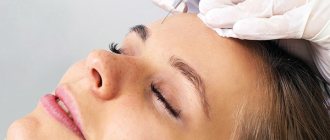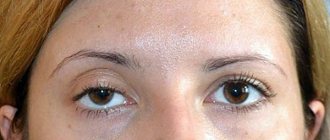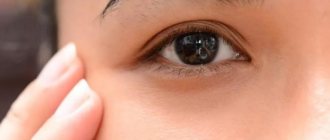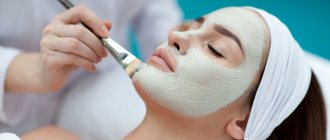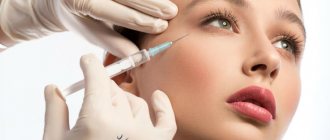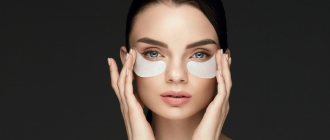Botox, or botulinum toxin, is a type A neurotoxin produced by the bacterium Clostridium botulinum. It has been successfully used in the fight against expression wrinkles for more than 20 years. In cosmetology, Botox injections are one of the most common and popular anti-aging procedures.
This is because: the procedure is relatively simple; it can be performed on an outpatient basis; the visible effect is maintained for six months, then the procedure can be repeated; with repeated injections, the duration of the therapeutic effect increases to a year, and in the future this can be done once a year; Botox is safe and completely eliminated from the body.
Getting rid of wrinkles with Botox
Botox and other similar drugs for express rejuvenation, for example, Dysport, are based on purified botulinum toxin type “A”. In nature, botulism neurotoxin is a potent organic poison that paralyzes the body. For cosmetic injections, the protein botulinum toxin complex is purified and neutralized, using the paralytic ability of the compound for instant and safe rejuvenation.
“Beauty injections” based on cosmetic botulinum toxin are used to temporarily get rid of facial wrinkles, the appearance of which is associated with spasm of the facial muscles in a certain area. For example, in the corners of the eyes or lips, on the bridge of the nose or forehead. Penetrating the skin, the protein neurotoxin relaxes and paralyzes the muscles, the contraction of which causes the appearance of deep folds. Thanks to the temporary action of a therapeutic muscle relaxant, the shading of wrinkles is smoothed out and the skin microrelief is evened out.
Injections with purified botulinum neurotoxin are minimally invasive anti-aging techniques that have been used in cosmetology for more than 10 years. Botox injections do not cause discomfort even in women sensitive to pain, because they are performed with special thin cannula angles. The Botox rejuvenation procedure can be done under local application anesthesia; it does not require long-term recovery. The only thing you need to be prepared for is that in the first hours and days after the procedure there are several restrictions, the violation of which leads to side effects or the disappearance of the injection results.
- In the first 6–8 hours after administration of the neuroparalytic, it is not recommended to take a horizontal position. The botulinum toxin-based drug should be evenly distributed under the skin of the treated areas. The supine position leads to its spreading, displacement and subsequent paralysis of neighboring muscles, which causes facial asymmetry or drooping tissue;
- On the first day after the procedure, it is not recommended to bend over (for example, ironing or washing floors), drink alcohol, touch your face or massage injection sites;
- In the first two weeks after Botox injections, it is forbidden to visit baths, steam rooms, saunas and solariums, as well as sunbathe in direct sunlight. It is necessary to exclude any factor of overheating of the skin in the area where the drug is applied. Increased sweating helps remove the product from the skin, which will negate the results of the procedure;
- In the first two weeks after muscle relaxant injections, it is not recommended to visit the gym or perform any physical activity;
A uniform blockade of botulinum toxin takes about 5 days; the final effect of the injections becomes noticeable only two weeks after the introduction of the neurotoxin under the skin. The effect of the drug is that facial wrinkles become invisible or disappear completely, the facial muscles at the injection site are paralyzed, which prevents the appearance of new folds.
Moderate application of Botox and its uniform distribution does not distort the natural facial expression and facial expressions. Cosmetic botulinum toxin is harmless to the body and its effect applies only to the treated area. The effect of the neuroparalytic ends after six months, after which the motor activity of the facial muscles is restored.
Performing hardware peels after or before Botox is acceptable and even desirable. You need to combine hardware skin cleansing with peelings and neurotoxin injections according to the following scheme:
- a muscle relaxant is injected into the localization of facial wrinkles 2 weeks after completing a course of hardware peelings;
- physical exfoliation is performed two to three weeks after Botox is administered, when the drug has already migrated and strengthened in the muscles.
Both schemes for comprehensive rejuvenation or skin cleansing complement and enhance each other: the skin texture after peelings is smoothed out and freed from the dense layer of dead epithelium, expression lines and age-related wrinkles disappear, peelings stimulate the natural production of collagen “springs” that support the skin frame, cell regeneration and eliminate inflammatory and pigmented formations on the face.
Research results show that purified botulinum neurotoxin, injected under the skin two to four weeks before hardware peels, such as laser, ultrasound or diamond, promotes a greater accumulation of new collagen filaments at the injection sites. Under the influence of Botox, facial muscles in certain areas are paralyzed, the resorption of the protein structures of collagen and elastin in these areas slows down, and wrinkles are filled with natural “fillers”. Therefore, cosmetologists note an improvement in the results of hardware peelings in combination with the introduction of Botox.
How can you mitigate possible discomfort immediately after Botox injections?
Almost any questions related to the consequences of botulinum therapy should be resolved with a cosmetologist. This rule also applies to cases where there seem to be no problems, but there are nuances that bother a person. Unpleasant sensations at injection sites are just such a case.
As a rule, doctors recommend easing or relieving itching at the sites of botulinum toxin injection using ice, a piece of frozen meat in a bag, and washing with cold water (just not very often). Such actions do not affect the activity of the drug, but significantly reduce the discomfort.
The same cooling agents can be used if swelling and bruising appear at the injection site. For the sake of truth, it is worth noting that applying cold to already formed swelling is practically useless, but, following established stereotypes, all women, when they discover such a problem, first of all run to the refrigerator or call a cosmetologist to get a recommendation. The cosmetologist, in order to prevent any serious mistakes on the part of the patient, prefers to advise her to apply ice. At the very least this will calm the person down.
Very rarely, a doctor may recommend lubricating the itchy areas with an anesthetic ointment. Here it is important to use ointments with analgesic components, and not anti-inflammatory ones: the latter can provoke activation of metabolic processes in the skin, which in this case is undesirable. Painkillers reduce the sensitivity of nerve endings, practically without affecting the kinetics of botulinum toxin.
Such ointments include Lidocaine, Dinexan, Emla and Luan gels.
Pain-relieving ointments and gels that reduce itching after Botox injections.
Do not inject painkillers into itchy areas of the skin. The puncture itself stimulates the movement of many substances in the dermis, which is undesirable after botulinum therapy. In extreme cases and if there is great need, such injections can be given by a doctor, but minor discomfort is not an indication for such manipulations.
Some consequences of Botox injections and its analogues clearly signal the need to see a doctor. For example, it is unacceptable to try to fix the following on your own:
- Obvious allergic rashes in the form of reddish spots raised above the skin;
- Swelling, due to which the eye (or both eyes) closes, and it is impossible to open the mouth;
- Very severe pain in the skin, head, throat, heart.
It is also useful to read: Botulax - the Korean analogue of Botox
All such sensations can signal a life-threatening condition, ranging from anaphylactic shock to a heart attack. Therefore, if they develop, you need to immediately call a doctor, and if possible, go to the hospital.
On a note
According to the regulations, after Botox injections, the patient must be under the supervision of a doctor for about half an hour. In case of an allergic reaction (deadly), its signs should appear within a given period of time. If this does not happen, an allergy to the botulinum toxin drug will almost certainly not develop later.
Botulinum toxin and laser peeling
Laser skin resurfacing can be done two weeks after botulinum toxin injections or a month before injections. In the first case, a two-week interval between procedures will be enough for the neuroparalytic to be evenly distributed in the skin, consolidate its effect and not “dissipate” during the period of cell renewal. In the second case, a month is enough for the skin to heal after laser peeling and the administration of botulinum toxin does not cause the development of infections.
It is prohibited to do laser peeling and botulinum therapy at the same time. Tissue swelling during the regeneration period after laser peeling will provoke unwanted “movement” of botulinum toxin. The consequences will be drooping of the eyebrows or lower eyelid, and in some cases, paralysis of the facial nerve.
At what age is acne treated with Botox?
Injections of drugs based on botulinum toxin for the treatment of acne and their prevention are used only in adults. This treatment is contraindicated for adolescents.
Despite popular belief, acne occurs at any age. Such rashes can accompany a person’s entire life or appear during menopause, when hormonal changes occur. Sometimes the skin condition deteriorates due to stress. In these situations, Botox is most effective.
To properly assess whether Botox procedures are suitable for treating acne in a particular case, you need to consult with a cosmetologist or dermatologist. A specialist will assess the situation and prescribe treatment. This can be only the introduction of drugs or combination therapy.
Injections and microcrystalline dermabrasion
Microdermabrasion is an aggressive cosmetic procedure and is classified as a medium-deep peel. During a peeling session, the stratum corneum of the epidermis is polished using diamond-coated cosmetic brushes or a special diamond tip. Skin rehabilitation after microcrystalline dermabrasion takes at least two weeks. At this time, it is better to refrain from performing any other procedures, including botulinum toxin blockade. Botox can be applied after microdermabrasion only after 2 weeks.
If the patient was first injected with Botox, and then rejuvenation with diamond peeling is planned, such a “neighborhood” is possible only with a two-week break between procedures. Until the muscle relaxant is completely fixed in the skin, any mechanical impact on the face can lead to its migration.
Microdermabrasion goes well with beauty injections. These techniques solve various aesthetic problems. Peeling renews and smoothes the skin, and Botox injections strengthen the rejuvenating effect and eliminate expression lines. Therefore, cosmetologists recommend combining these lifting procedures without fear.
Diet and medication after botulinum toxin injections
Starting from the day following the day of botulinum therapy, there are no restrictions in the choice of food. Even spicy and hot dishes 24 hours after the procedure cannot affect the effect of botulinum toxin, so the very next day you can stick to your usual diet.
Coffee, hot tea, and alcoholic beverages are not recommended to be consumed in the first hours after the procedure. If possible, it is advisable to avoid them until the next day. And the next day after the injections, you can drink whatever you want, in any quantity (naturally, remembering the dangers of excessive alcohol consumption).
Any potent medications can be taken within 3-5 days after botulinum therapy only after consultation with a cosmetologist. Some antibiotics, antidepressants, muscle relaxants, anticonvulsants, and anticoagulants can affect the results of injections. The list of medications that are incompatible with Botox includes more than 300 items, but you do not need to know them all: it is enough to consult the doctor who injected Botox about the admissibility of taking a particular drug.
On a note
Be careful: one of the side effects of Botox injections is a flu-like syndrome - the patient feels as if he has an acute respiratory viral infection for 2-3 days. He has a sore throat, a slight runny nose, and a headache. This happens frequently and is not associated with a viral infection. In this case, there is no need for special treatment, painkillers or antiviral drugs. If symptoms persist after 3-4 days, it is indeed a viral disease. If the symptoms disappear within 2-3 days, you can calm down - this is only a consequence of Botox injections.
After Botox injections, some symptoms similar to those of a cold may appear. This condition usually goes away within 2-3 days.
Contrary to popular belief, general anesthesia, especially if done a long time ago, does not in any way affect the effectiveness of botulinum therapy. It is a mistake to assume that Botox will inevitably lead to severe allergies or heart attacks in people who have previously undergone general anesthesia.
Botox and chemical exfoliation
Injections of a muscle relaxant complement and enhance the effect of chemical peels. Some types of acid and enzyme exfoliation also aim to eliminate fine lines and wrinkles. Therefore, botulinum toxin is able to prolong the effect of anti-aging peels by affecting the facial muscle frame.
If neurotoxin administration precedes superficial or midline chemical peels, at least 2-3 weeks should elapse between treatments. During this time, the drug will relax and completely immobilize the muscles in places where wrinkles accumulate. The skin will be smoother and peelings based on acids or enzymes will act on it more evenly.
If skin cleansing with peeling is planned on the eve of botulinum therapy, at least two weeks should also pass between sessions of anti-aging procedures (depending on the type of peeling and the depth of penetration of the substance). This interval will be sufficient for complete rehabilitation of the skin after the action of acid solutions and partial alignment of the network of wrinkles. Botox injections in this case will enhance the effect of peeling and consolidate its results.
The combination of Botox and peels is based on the “two week rule”. Whatever sequence these procedures are performed, there should always be a two-week interval between them. This time is enough for the skin to restore after peeling and for the muscle relaxant to be fixed in the muscles.
Recommendations and advice from cosmetologists
- When using Botox + peeling in combination, cosmetologists advise starting with Botox, since the peeling effect on relaxed skin is much higher.
- Peeling after Botox should be done only after 2-3 weeks, otherwise you can level out both. Carrying out both procedures simultaneously is strictly prohibited.
- Do not ignore the advice of doctors, strictly adhere to the instructions given to you, the result of the procedure depends on this.
- Botox injections are most effective before age 50. At a more mature age, it is more advisable to choose other anti-aging procedures.
- Communication with the doctor should be frank; do not hesitate to ask more questions.
- Cosmetologists advise not to abuse beauty injections before the age of 35, as the production of your own hyaluronic acid and albumin is disrupted.
- Don't follow the advice of your friends. A cosmetologist will help you choose the right type of peeling.
We recommend: Features of chemical peeling for the face. Pros and cons of the procedure, rules of preparation and conduct
Before starting the procedures, consult with a specialist who will help you choose the best course of rejuvenation for you.



